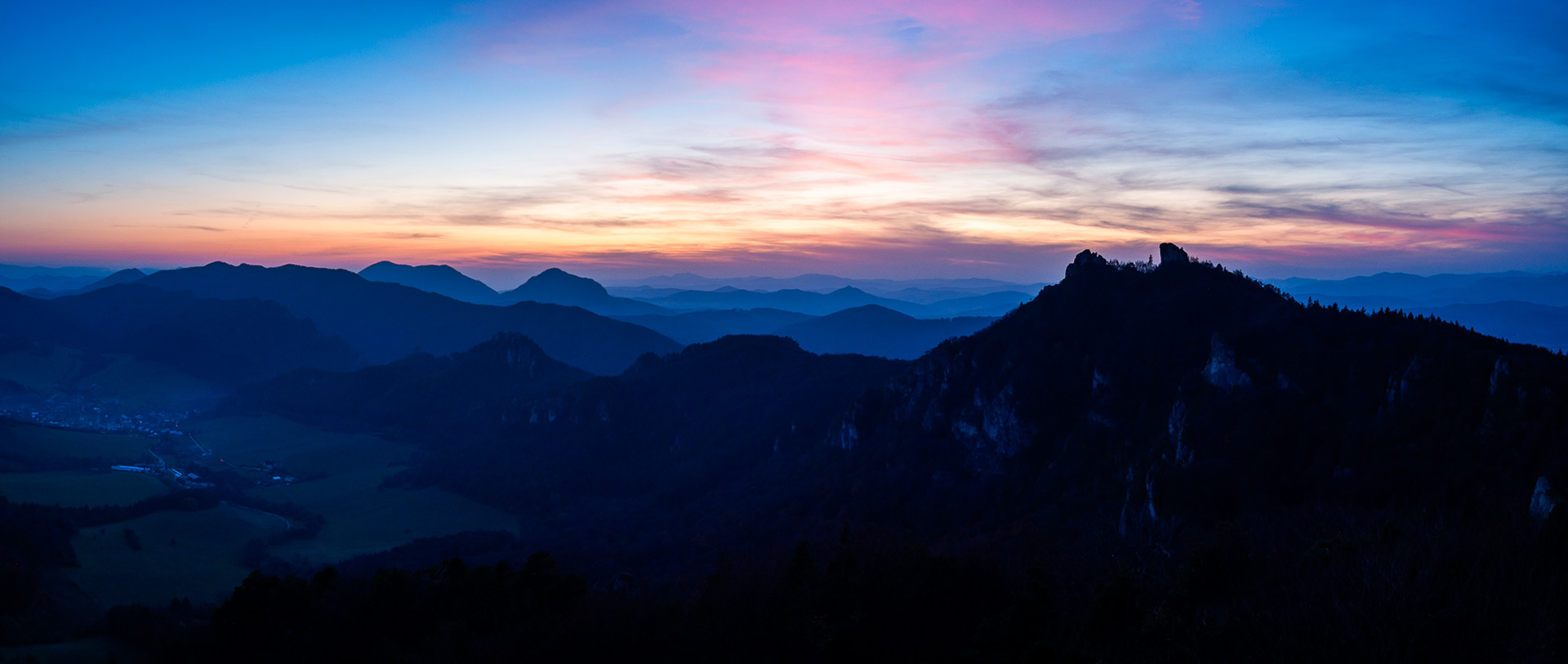Malá Fatra is a picturesque mountain range in northwestern Slovakia, part of the Western Carpathians. It is primarily composed of limestone and dolomite, which have been shaped over millions of years by tectonic activity and erosion. This has resulted in a rugged terrain with steep peaks, deep gorges, and dramatic rock formations. The highest peak, Veľký Kriváň (1,709 m), offers sweeping views of the surrounding landscape.
One of the most fascinating examples of natural landscape modeling in the area is Jánošíkove diery—a network of canyons, waterfalls, and narrow rock passages carved by water through softer rock layers. Malá Fatra is also rich in biodiversity, home to rare species such as the brown bear, lynx, and bearded vulture. Protected as a national park, the region showcases how geological forces and natural erosion shape complex and beautiful landscapes over time.
____________
Malá Fatra je malebné pohoří na severozápadě Slovenska, tvořené převážně vápencem a dolomitem, které vytváří dramatické skalní útvary, hluboké rokle a strmé štíty. Geologicky patří do oblasti Západních Karpat a je známá svým členitým reliéfem, který vznikl složitými tektonickými procesy a následnou erozí. Nejvyšším vrcholem je Veľký Kriváň (1 709 m), odkud se otevírají panoramatické výhledy na okolní krajinu.
Zajímavým příkladem přírodního modelování krajiny jsou Jánošíkove diery – systém kaňonů, vodopádů a skalních soutěsek, které vznikly působením vody v měkkých horninách. Oblast je bohatá na biodiverzitu, s výskytem vzácných druhů rostlin a živočichů, jako je medvěd hnědý, rys ostrovid nebo orlosup. Malá Fatra je chráněna jako národní park a představuje výjimečný příklad toho, jak přírodní síly formují krajinu v průběhu milionů let.

Súľovské skaly in northwestern Slovakia are a striking natural rock formation shaped over millions of years by geological and erosional processes. Composed mainly of Eocene limestone conglomerates, these rocks were formed in a dynamic marine environment and later uplifted and folded during the Neogene period. The result is a dramatic landscape of rock towers, needles, gates, and windows—most famously the Gotická brána (Gothic Gate). The area showcases a rare phenomenon called relief inversion, where erosion sculpted the terrain in reverse, making former valleys into ridges. Today, this "rock town" is a national nature reserve, rich in biodiversity and geomorphological features, offering a vivid example of how nature models landscapes through time.
















